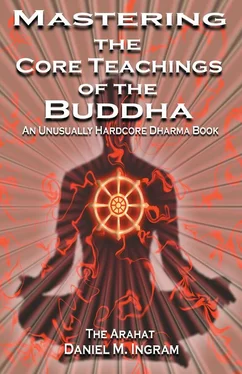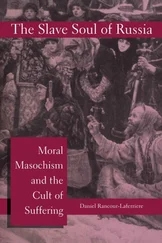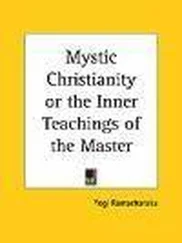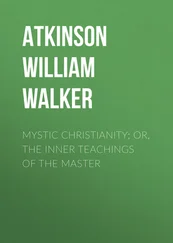Daniel Ingram - Mastering the Core Teachings of Buddha - An Unusually Hardcore Dharma Book
Здесь есть возможность читать онлайн «Daniel Ingram - Mastering the Core Teachings of Buddha - An Unusually Hardcore Dharma Book» весь текст электронной книги совершенно бесплатно (целиком полную версию без сокращений). В некоторых случаях можно слушать аудио, скачать через торрент в формате fb2 и присутствует краткое содержание. Год выпуска: 2009, ISBN: 2009, Издательство: Aeon Books, Жанр: Старинная литература, на русском языке. Описание произведения, (предисловие) а так же отзывы посетителей доступны на портале библиотеки ЛибКат.
- Название:Mastering the Core Teachings of Buddha - An Unusually Hardcore Dharma Book
- Автор:
- Издательство:Aeon Books
- Жанр:
- Год:2009
- ISBN:9781904658405
- Рейтинг книги:5 / 5. Голосов: 1
-
Избранное:Добавить в избранное
- Отзывы:
-
Ваша оценка:
- 100
- 1
- 2
- 3
- 4
- 5
Mastering the Core Teachings of Buddha - An Unusually Hardcore Dharma Book: краткое содержание, описание и аннотация
Предлагаем к чтению аннотацию, описание, краткое содержание или предисловие (зависит от того, что написал сам автор книги «Mastering the Core Teachings of Buddha - An Unusually Hardcore Dharma Book»). Если вы не нашли необходимую информацию о книге — напишите в комментариях, мы постараемся отыскать её.
Mastering the Core Teachings of Buddha - An Unusually Hardcore Dharma Book — читать онлайн бесплатно полную книгу (весь текст) целиком
Ниже представлен текст книги, разбитый по страницам. Система сохранения места последней прочитанной страницы, позволяет с удобством читать онлайн бесплатно книгу «Mastering the Core Teachings of Buddha - An Unusually Hardcore Dharma Book», без необходимости каждый раз заново искать на чём Вы остановились. Поставьте закладку, и сможете в любой момент перейти на страницу, на которой закончили чтение.
Интервал:
Закладка:
Each stage is marked by very specific increases in our perceptual abilities. The basic areas we can improve in are clarity, precision, speed, consistency, inclusiveness and acceptance. It is these improvements in our perceptual abilities that are the hallmarks of each stage and the gold standard by which they are defined and known. Each stage also tends to bring up mental and physical raptures (unusual manifestations). These are fairly predictable at each stage and sometimes very unique to each stage. They are secondary to the increase in perceptual thresholds of ways by which we may judge whether or not we are in a particular stage.
Each stage also tends to bring up specific aspects of our emotional and psychological makeup. These are also strangely predictable, but these are not as reliable for determining which stage is occurring. They are suggestible, ordinary, and will show more variation from person to person. However, when used in conjunction with the changes in perceptual threshold and the raptures, they can help us get a clearer sense of which stage has been attained. Further, these stages occur in a very predictable order, and so looking for a pattern of stages leading one to the next can help us get a sense of what is going on. Thus, when 170
The Progress of Insight
reading my descriptions of these stages, pay attention to these separate aspects: the shift in perceptual threshold, the physical and mental raptures, the emotional and psychological tendencies, and the overall pattern of how that stage fits with the rest.
So, the meditator sits down (or lies down, stands, etc.) and begins to try to experience each and every sensation clearly as it is. When the meditator gains enough concentration to steady the mind on the object of meditation, something called “access concentration,” they may enter the first jhana, now called the “first vipassana jhana,” which is in some ways the same for both concentration practice and insight practice at the beginning. However, as they have been practicing insight meditation, they are not trying to solidify this state, but are trying to penetrate the three illusions by understanding the Three Characteristics.
They have been trying to sort out with mindfulness what is body and what is mind and when each is and isn’t there. They have been trying to be clear about the actual sensations that make up their world just as they are. They have been trying to directly understand the Three
Characteristics moment to moment in whatever sensations arise, be it in a restricted area of space, such as the area of the sensations of breathing, a moving area of space (e.g. body-scanning practices), in the whole of their world as is done in choiceless awareness practices, using some other technique or object, or just by being alive and paying attention.
Thus, this first stage has a different quality to it from that of concentration practice, and they attain to direct and clear perception of the first knowledge of...
1. MIND AND BODY
There is this sudden shift, and mental phenomena shift out away from the illusory sense of “the watcher” and are just out there in the world with the sensations of the other five sense doors. This is an important insight, as it shows us clearly and directly that we are not
“our” mind or “our” body. It is also a really nice, clear and unitive-feeling state (it really is still more state-like than stage-like), and people can try to hold on to it just as with the first jhana and get stuck. Reality can seem just a bit more brilliant the first time one chances into Mind and Body. We may feel more alive and connected to the world.
171
The Progress of Insight
With the sensate experience of both mental and physical
phenomena being clearly observable, the relationships and interactions between the two begin to become obvious. What is meant by “the dualistic split” is very obvious during this first stage.
Somewhere around the first stage, either just before it or shortly after it, there may arise odd jaw pains on one side, throat tensions, and some other such unpleasant physical occurrences. Regardless, it soon becomes easy to see that each sensation is followed by the crude mental impression of it, and that intentions precede actions and thoughts (see the discussion of impermanence in Part I, The Three Characteristics).
Thus, we come to...
2. CAUSE AND EFFECT
In this stage, the relationships between mental and physical phenomena become very clear and sometimes ratchet-like. The joy and wonder of Mind and Body have left, and now the interactions between the mind and body become somewhat mechanical seeming. Motions such as walking or the breath may begin to get jerky, as there is the intention and the motion, the sensation and the mental impression of it, the cause and the effect, all occurring in a way which can seem sort of tight and robot-like. You note, the breath moves just a bit. You stop noting, the breath stops. You note quickly, the breath jerks quickly. You note slowly, the breath follows. Some will stop noting quickly or stop noting at all, thinking that they are messing up the breath. The advice here is as before: note quickly, and don’t worry about what the breath does.
Remember how I recommended trying to experience one to ten
sensations per second consistently, noting which were mental and which were physical? At this stage, the meditator is finally able to do this with a fair degree of skill, confidence and consistency. Those with stronger concentration tendencies or a bent towards such things may notice thoughts and perhaps even visions of insight into cause and effect on a macroscopic scale, where past action or circumstances lead to various consequences, some event lead to some rebirth, some previous life lead to something today, and in general may get a sense that they are able to intuit aspects of the workings of karma in a way they did not before. As the meditator becomes more clear about the beginnings and endings of 172
The Progress of Insight
each of these, about the irritation caused by this jerkiness and about the fact that all of this seems to be happening fairly on its own, they come to directly perceive for themselves...
3. THE THREE CHARACTERISTICS
The Three Characteristics of impermanence, unsatisfactoriness and egolessness or no-self become predominant, which is good, as these are the fundamental basis for insight. Here it begins to become quite clear that these intentions and actions, sensations and the knowledge of them, and all of the constituents of this experience are quickly arising and passing, somewhat jarring, and not particularly in our control or us.
Further, as these sensations are all observed, including the crude mental impression that follows them (“consciousness”), the whole of the mind and body process is not a separate self. It is merely a part of the interdependent world.
These characteristics become clearer and clearer, as well as faster and faster, as the meditator diligently pays careful attention to exactly what is happening at each moment. For those doing noting practice, somewhere around here your speed and precision may begin to get so fast that you cannot note every sensation you experience. Move to more general noting, mono-syllabic noting (such as “beep” for each sensation experienced regardless of what it was), or drop the noting entirely and stay with noticing bare sensation come and go. At this stage, practice begins to really take off despite the fact that this stage tends to be fairly unpleasant.
This unpleasantness tends to be mostly physical, though this stage can also cause numerous dark feelings and a sense of wanting to renounce the world and practice. Occasionally, the early part of this stage can cause people to feel vulnerable, raw, and irritable to a small or large degree in the ways that a migraine headache or a bad case of PMS
Читать дальшеИнтервал:
Закладка:
Похожие книги на «Mastering the Core Teachings of Buddha - An Unusually Hardcore Dharma Book»
Представляем Вашему вниманию похожие книги на «Mastering the Core Teachings of Buddha - An Unusually Hardcore Dharma Book» списком для выбора. Мы отобрали схожую по названию и смыслу литературу в надежде предоставить читателям больше вариантов отыскать новые, интересные, ещё непрочитанные произведения.
Обсуждение, отзывы о книге «Mastering the Core Teachings of Buddha - An Unusually Hardcore Dharma Book» и просто собственные мнения читателей. Оставьте ваши комментарии, напишите, что Вы думаете о произведении, его смысле или главных героях. Укажите что конкретно понравилось, а что нет, и почему Вы так считаете.












